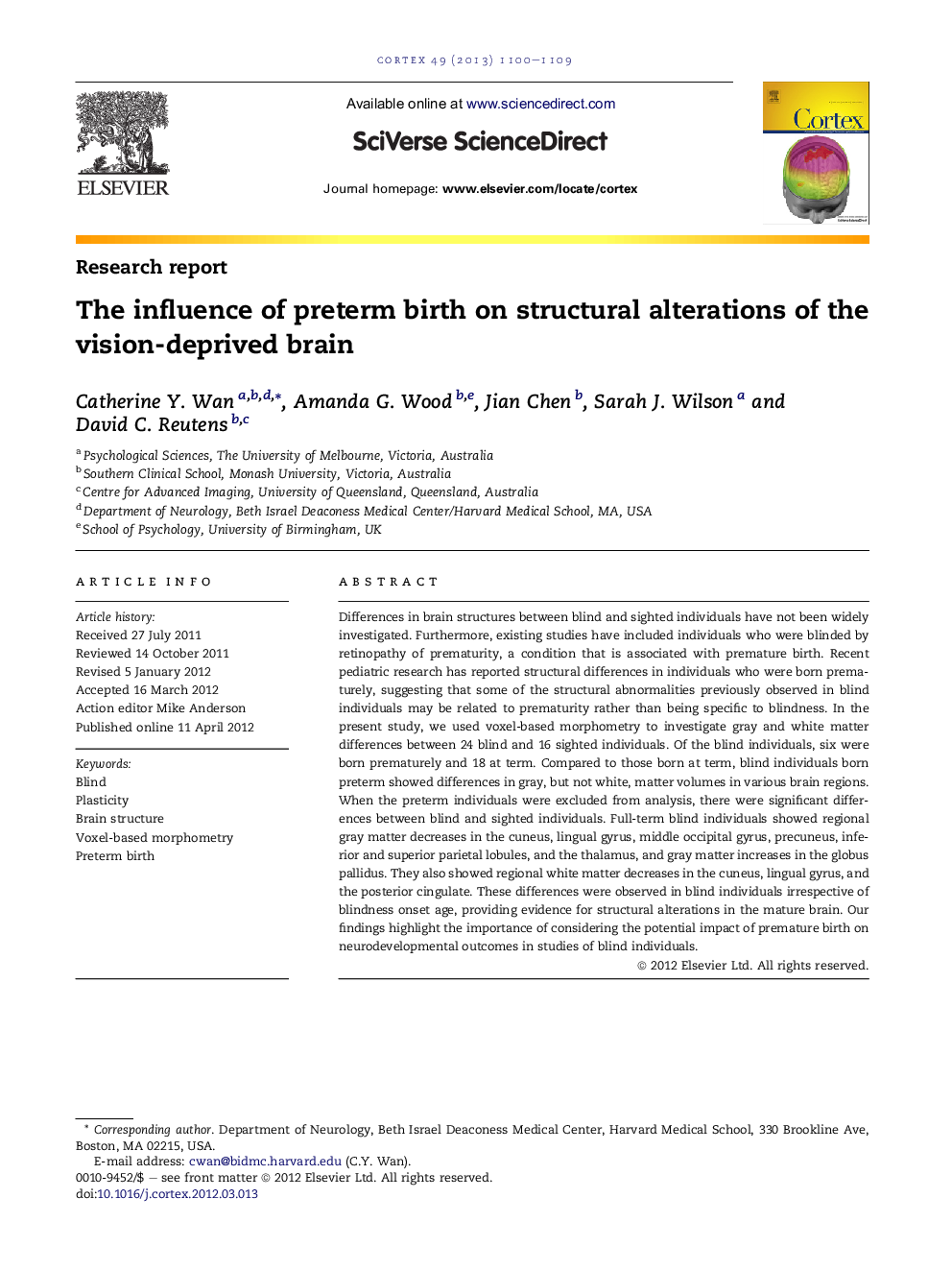| Article ID | Journal | Published Year | Pages | File Type |
|---|---|---|---|---|
| 942100 | Cortex | 2013 | 10 Pages |
Differences in brain structures between blind and sighted individuals have not been widely investigated. Furthermore, existing studies have included individuals who were blinded by retinopathy of prematurity, a condition that is associated with premature birth. Recent pediatric research has reported structural differences in individuals who were born prematurely, suggesting that some of the structural abnormalities previously observed in blind individuals may be related to prematurity rather than being specific to blindness. In the present study, we used voxel-based morphometry to investigate gray and white matter differences between 24 blind and 16 sighted individuals. Of the blind individuals, six were born prematurely and 18 at term. Compared to those born at term, blind individuals born preterm showed differences in gray, but not white, matter volumes in various brain regions. When the preterm individuals were excluded from analysis, there were significant differences between blind and sighted individuals. Full-term blind individuals showed regional gray matter decreases in the cuneus, lingual gyrus, middle occipital gyrus, precuneus, inferior and superior parietal lobules, and the thalamus, and gray matter increases in the globus pallidus. They also showed regional white matter decreases in the cuneus, lingual gyrus, and the posterior cingulate. These differences were observed in blind individuals irrespective of blindness onset age, providing evidence for structural alterations in the mature brain. Our findings highlight the importance of considering the potential impact of premature birth on neurodevelopmental outcomes in studies of blind individuals.
